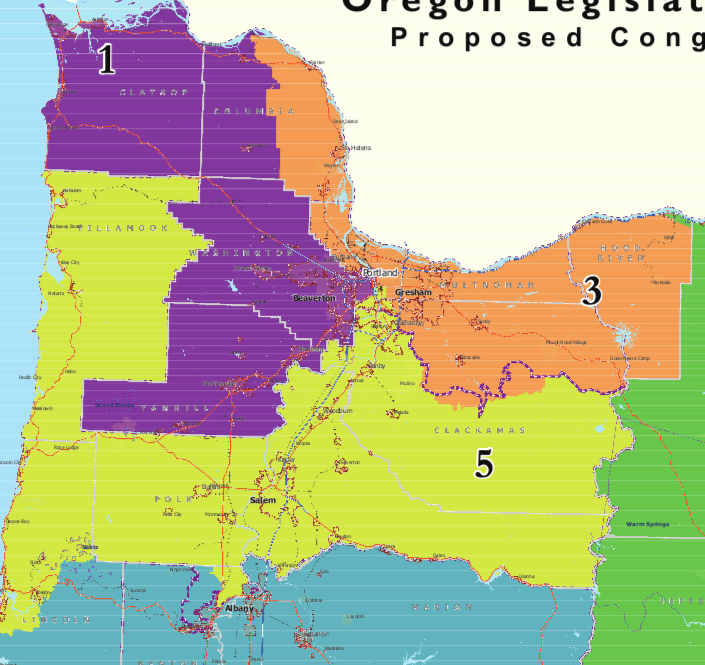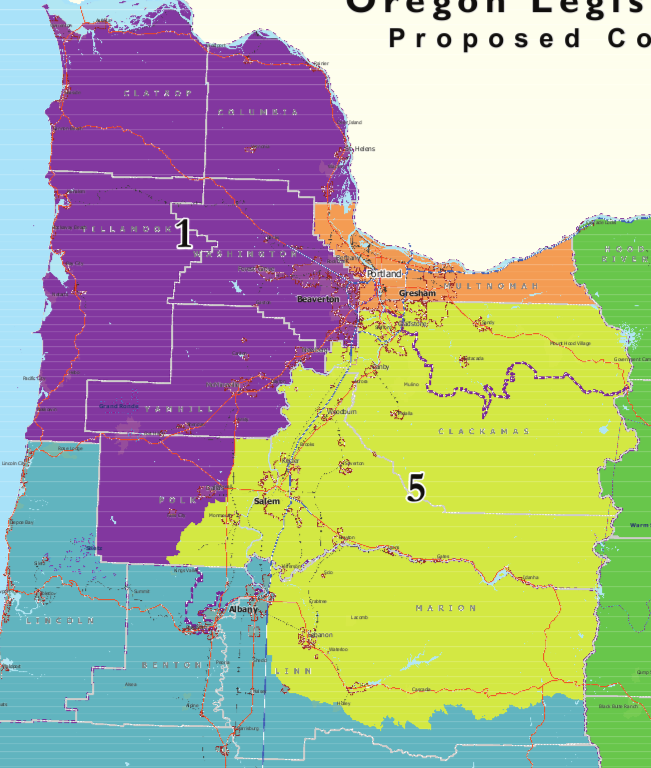The battle is joined and the fun begins. When it came to Oregon's congressional districts, the basic strategy and principles at play have been clear for some time, and now - with release of Democratic and Republican proposed maps (for legislative as well - see the next post) - we now have maps to fight over.
The next redistricting commission meeting is May 17.
The basic strategic goal for the parties on the congressional level has been drawing lines that will continue the likelihood of a 4D/1R House delegation, as opposed to increasing competitiveness of one or two of those districts. (Two of the districts, those based in Portland and east of the Cascades, are foregone conclusions as strongly Democratic and Republican respectively; the battles are over the other districts.) And the main way you would change the equation is by keeping big and heavily Democratic Multnomah County in one district, making the two main suburban districts to the west and south (currently, districts 1 and 5) less Democratic.
Here's the Democratic proposal. (What's shown here, in northwest Oregon, is the key area; the Cascade range and beyond, to the east, all goes in district 2, and the area to the south, south of Corvallis and Albany, are in 4. This is true for both parties' proposals.)
Looks a good deal like the current district lineup, the main difference being the addition of (increasingly Democratic) Hood River to heavily Democratic District 3. It continues to split off a significant chunk of Multnomah into District 1, and a smaller piece into District 5 - giving each a little more Democratic edge. District 3 would run from Hood River along the Columbia to about Ranier.
And here's the Republican.
It looks smooth, with compact districts. There are political implications, of course. But keeping Multnomah in one piece, districts 1 and 5 have been given more Republican territory, moving each in the Republican direction from their current makeup. District 1 would lose heavily Democratic western Portland, for example, and pick up Republican Polk County.
The Republican plan makes District 4, the currently marginally Democratic area held by Democrat Peter DeFazio, more Democratic by throwing in (usually Democratic) Lincoln and all of Benton counties. Republicans seem to be conceding that one as the price for picking up (they hope) advantages in 1 and 5.
The big fight, though, clearly is going to be over whether Multnomah is split between congressional districts (whether two or three) or made intact within one. It's hard to see where the compromise on that will come.



